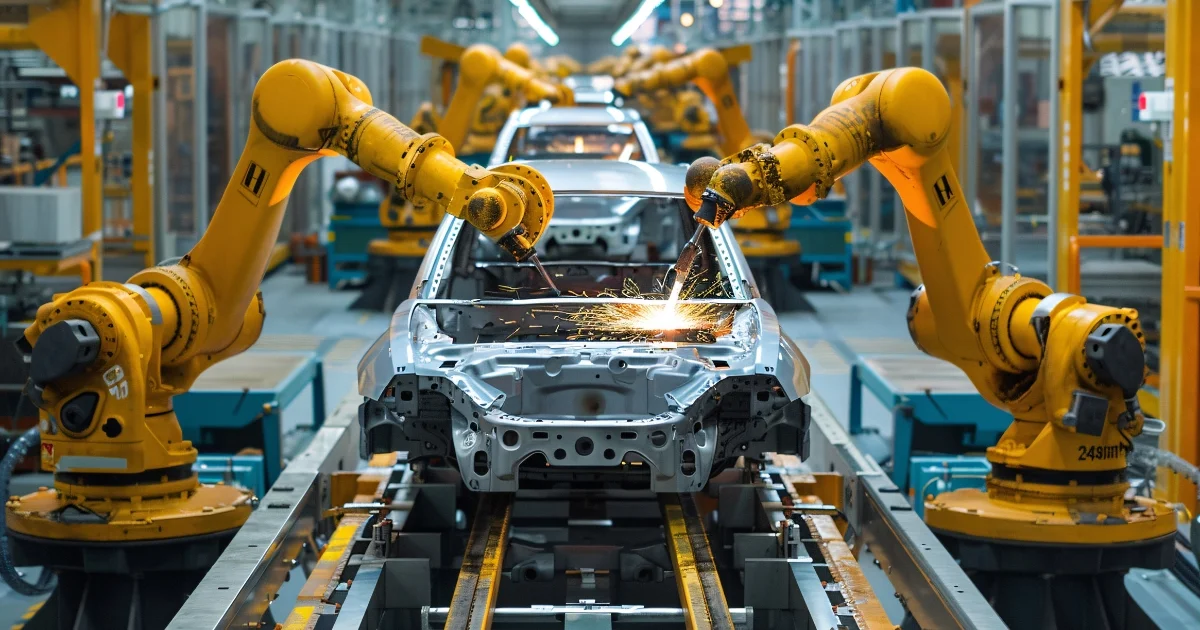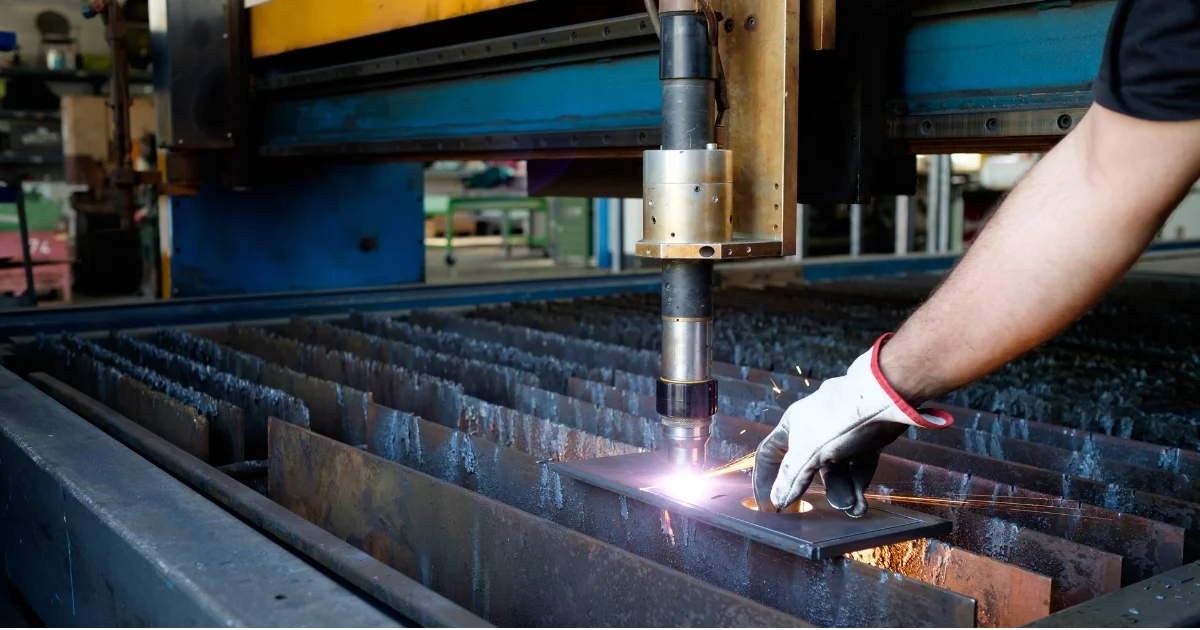
We collect basic website visitor information on this website and store it in cookies. We also utilize Google Analytics to track page view information to assist us in improving our website.
If you’re passionate about metal cutting or just keen to learn more, you’ve landed in the right place.
For over 38 years, Amber Steel has been at the forefront of metal cutting services, specializing in laser cutting, flame cutting, and plasma cutting. Our expertise has carved a niche in this cutting-edge industry, delivering precision and excellence across industrial projects big and small.
In our blog, we’ll share a mix of useful tips, innovative applications, our thoughts on sustainability in steel cutting, and more. Expect stories from the cutting floor, insights into how our processes can streamline projects across industries, and a few lessons we’ve learned along the way.
While we keep some of our trade secrets under wraps, this blog is designed to offer valuable nuggets of wisdom that you simply won't find anywhere else. Whether you’re a professional in the industry or someone fascinated by the possibilities of metal cutting, you'll find something of value here.
So, stick with us as we delve into the finer points of metal work. We’re glad to share our insights and lead discussions that matter to our industry.
How precision metal cutting propels the aerospace industry, from constructing lighter frames to enhancing aerodynamics.
The role of advanced metal cutting in automotive manufacturing, driving innovations in vehicle design and efficiency.
All about the robust and versatile process of flame cutting, ideal for tackling thicker metals with precision and ease.
Discover the art of crafting metal furniture, where cutting techniques meet design to create both functional and aesthetic pieces.
A behind-the-scenes look at the mechanics of metal cutting technologies and the science that makes them tick.
Laser cutting is where extreme precision meets efficiency, allowing for intricate designs and clean finishes.
The critical role of precise steel cutting in developing reliable and intricate medical devices.
How steel cutting supports the oil and gas industry with components that withstand extreme environments and pressures.
Known for its speed and versatility, plasma cutting slices through conductive metals with hot plasma.
Safety first! Tips and insights on maintaining a safe environment while handling powerful metal cutting equipment.
The backbone of construction, where steel fabrication and cutting technologies create frameworks that shape skylines.
Sustainability
A look at sustainability in metal cutting, focusing on practices that reduce waste and conserve energy to protect our planet.

One stalled part stops an entire assembly line. Automotive timelines are tight, and a single production delay can cascade into costly disruptions throughout the supply chain. As demand rebounds and EV production accelerates, OEMs and Tier 1 suppliers are under growing pressure to scale fast – without sacrificing quality or cost.
A McKinsey report explains that the shift to EVs adds even more pressure. Suppliers are now racing to meet demand while staying efficient and cost-conscious. When production bottlenecks hit, delays ripple through the supply chain, costing time, money, and trust at every level, from manufacturers to end users.
This is where plasma cutting for automotive manufacturing comes in—delivering fast, flexible throughput on thick steel components at scale. Whether it’s cutting structural steel for chassis reinforcements or brackets for assembly lines, plasma technology is made for scaling – and built for steel.
This post looks at how plasma cutting supports high-volume automotive production, when it’s the right choice, and why part accuracy, material range, and smart systems matter when selecting a service provider. You’ll also see how it stacks up against other cutting methods and fits into today’s fast-moving automotive workflows.
When production ramps up, your cutting process needs to keep up. Scaling up isn't just about producing more but about doing so without adding friction. As demand increases, manufacturers need systems that won’t slow under pressure or require costly rework.
Plasma cutting offers that rare combination of speed and repeatability while staying flexible enough to support ongoing design changes. It allows production lines to ramp up fast while maintaining part consistency across thousands of units. Plasma cutting is well-suited for high-demand automotive manufacturing because of its speed, power, and flexibility. It’s built to meet the needs of large-scale operations without slowing things down.
Plasma cutting stands out in several key areas for automotive use:
Cuts through thick materials (up to 1.250") often found in frames, underbodies, and structural parts
Runs at high speeds across large cutting beds (some as big as 12' x 63') to boost part output
Delivers precision within ±0.040", which works for most structural and semi-precision needs
Keeps cycle times steady with minimal tool wear, even in high-volume runs
Unlike laser cutting, which is ideal for thin metals or very detailed designs, plasma works best when you need strength, speed, and size. It’s a great fit for cutting structural steel and hot-rolled sheet stock that will feed directly into presses, weld cells, or frame assembly stations.
Plasma cutting is often seen as a cost-saving option. But with the right setup and equipment, it becomes a real asset for production – not just prototyping. Modern CNC plasma cutting transforms automotive workflows. These systems combine cutting, marking, and forming.
The result? Parts that arrive ready for assembly, such as:
Structural reinforcement panels
Engine and transmission brackets
Subframe connectors
Shielding and protective components
Chassis braces and cross-members
This flexibility is one reason plasma cutting for automotive manufacturing continues to gain traction in high-output production environments. It’s fast, adaptable, and precise hallmarks of reliable automotive manufacturing solutions.
Integrated workflows that include forming, machining, welding, and part marking are increasingly common in modern plasma cutting setups. This means parts come off the line ready to assemble – no need to send them out for extra steps.
That kind of integration saves time and cuts down delays. It also makes CNC plasma cutting a smart solution when production is growing fast and you need tools that can keep up.
Plasma cutting works across a wide range of metals and material sizes. This flexibility makes it a strong choice for manufacturers working across multiple platforms or material specs.

It can:
Cut carbon steel, stainless steel, and aluminum
Handle thicknesses from 0.25" to 1.250" with reliable edge quality
Maintain cut consistency across different grades without slowing down
Switch between stock sizes with minimal setup time
When your production needs vary by vehicle model or material type, this adaptability becomes a major advantage.
Smart software now plays a big role in boosting plasma cutting productivity, especially for automotive manufacturing. Modern systems use automation and data to improve precision, reduce waste, and keep production moving fast.
Today’s software helps lay out parts in smarter ways:
Tightly arranges parts to use more of each steel sheet
Cuts down on waste by placing parts in the best orientation
Maps cutting paths to reduce torch movement and save time
Recognizes shared edges between parts and cuts them together
This helps automotive suppliers get more parts per sheet and less scrap overall.
Automation also improves cutting performance during production:
Adjusts torch height and speed for better cut quality
Tracks wear on nozzles and electrodes for consistent results
Auto-corrects for material differences without pausing the job
Supports unmanned operation for longer production runs
These features reduce the need for manual checks and help keep parts uniform across large orders.
Pairing plasma cutting with forming software and part-marking tools streamlines production. This approach cuts, labels, and bends every part in one seamless process. It reduces handling time and integrates perfectly with lean manufacturing setups.
Even though plasma is a heat-based process, newer systems have made big gains in efficiency and sustainability. Many shops now follow zero-waste practices, recycling all offcuts and maximizing material use from the very first CAD file.
Modern plasma systems support cleaner, more responsible manufacturing:
They reduce waste using optimized nesting and shared cuts
They use less energy with inverter-based power supplies
They lower emissions by improving gas use and adding filtration
They manage water more efficiently in water table setups
Sustainability is no longer just a value add but, in many cases, a requirement. As OEMs publish ESG targets and seek greener partners, suppliers must show how they reduce waste, energy, and emissions. Plasma cutting systems that optimize nesting, minimize scrap, and support recycling deliver measurable impact.
These upgrades matter. As more OEMs aim to cut their carbon footprint, they look for suppliers who also care about environmental impact. Choosing cutting systems that prioritize sustainability helps suppliers align with OEM environmental targets and ESG standards.
Plasma cutting stands out across many automotive applications, especially in chassis systems, powertrain supports, and safety components. It’s often the best choice when production speed, part consistency, and material strength are top priorities.
Plasma cutting works well when part volumes increase quickly to meet production targets. It supports just-in-time delivery schedules with fast turnaround and dependable throughput. Thousands of parts can be produced with consistent quality across each run. Plus, manufacturers can scale output without needing major equipment upgrades.
If your components use thick steel plates, plasma cutting is often more effective than laser systems. It’s ideal when structural strength is non-negotiable or when you need to cut through materials thicker than what lasers can handle. Plasma also handles multiple material types on the same system without long setup changes.
For material-heavy jobs, it’s often the most cost-efficient option. Suppliers seeking thick steel cutting solutions turn to plasma for reliable throughput without high tooling costs.
Speed and efficiency matter, especially in fast-moving assembly environments. Plasma-cut parts often require little to no finishing before they move to the next step. When quality documentation and traceability are required, plasma systems with integrated marking make tracking easy.
Design changes are also easier to manage, thanks to the system’s flexibility.
With fast cutting speeds, large bed sizes, and tight integration into manufacturing workflows, plasma cutting helps keep production on schedule without causing downstream delays or bottlenecks.
Not all CNC plasma cutting services are created equal. Look for providers with automation, inspection, and support across the full production chain. Choosing the right plasma cutting provider for automotive work requires more than just fast equipment. The best partners bring a full set of capabilities that support production from start to finish.
Look for providers with:
Large cutting beds and strong material handling systems
Multi-torch setups to cut several parts at once
High-definition plasma for better edge quality
Integrated marking tools for part ID and traceability
Strong quality control includes:
In-process inspection and tracking
Material certification and traceability paperwork
Statistical process control for consistency
First article inspections and reporting
You’ll want a partner who can:
Handle spikes in volume without delay
Offer quick turn support for urgent needs
Adjust production schedules as things shift
Manage inventory to support just-in-time delivery
Some providers also offer:
Integrated forming and bending
Welding and assembly support
Deburring and edge finishing
Packaging and logistics for ready-to-use delivery
Plasma cutting is built for scale. When you're managing high volumes, material variation, and tight timelines, your cutting process needs to do more than keep up. It needs to drive efficiency at every step.
Whether you’re cutting structural frames, chassis brackets, or protective panels, CNC plasma cutting delivers the speed, precision, and flexibility today’s automotive workflows demand. Ready to scale your automotive builds? Discover how CNC plasma cutting delivers thick steel components – fast, precise, and production-ready.